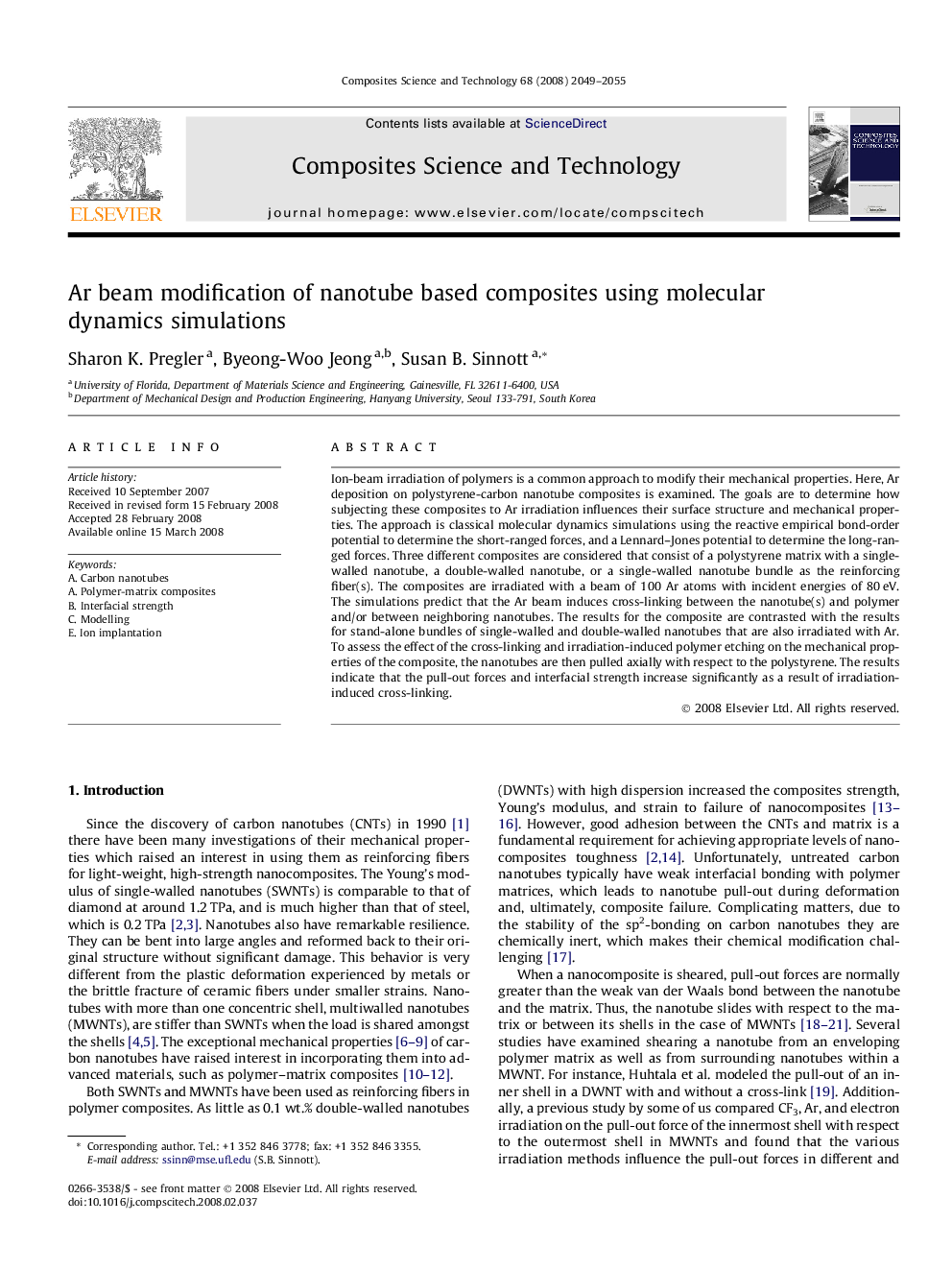| Article ID | Journal | Published Year | Pages | File Type |
|---|---|---|---|---|
| 822458 | Composites Science and Technology | 2008 | 7 Pages |
Ion-beam irradiation of polymers is a common approach to modify their mechanical properties. Here, Ar deposition on polystyrene-carbon nanotube composites is examined. The goals are to determine how subjecting these composites to Ar irradiation influences their surface structure and mechanical properties. The approach is classical molecular dynamics simulations using the reactive empirical bond-order potential to determine the short-ranged forces, and a Lennard–Jones potential to determine the long-ranged forces. Three different composites are considered that consist of a polystyrene matrix with a single-walled nanotube, a double-walled nanotube, or a single-walled nanotube bundle as the reinforcing fiber(s). The composites are irradiated with a beam of 100 Ar atoms with incident energies of 80 eV. The simulations predict that the Ar beam induces cross-linking between the nanotube(s) and polymer and/or between neighboring nanotubes. The results for the composite are contrasted with the results for stand-alone bundles of single-walled and double-walled nanotubes that are also irradiated with Ar. To assess the effect of the cross-linking and irradiation-induced polymer etching on the mechanical properties of the composite, the nanotubes are then pulled axially with respect to the polystyrene. The results indicate that the pull-out forces and interfacial strength increase significantly as a result of irradiation-induced cross-linking.
